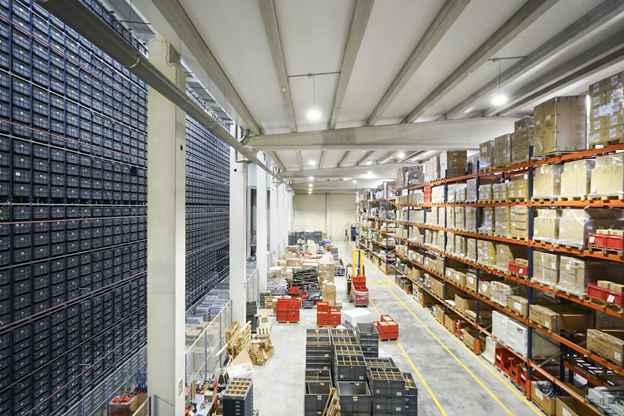A Cautionary Tale from the U.S. Healthcare System: Here’s how forces of change bring about negative outcomes.
Today, we’re going to take a deeper look at a cautionary tale from the U.S. healthcare system. Continue reading below to learn why cybersecurity is going to become crucial in the years to come. |
|
A Cautionary Tale from the U.S. Healthcare System: Here’s how forces of change bring about negative outcomes. Artificial intelligence (AI) as a field of study has been around for a long time. However, it only reached mainstream with the debut of OpenAI ’s ChatGPT in 2022. Once folks got to see what ChatGPT could do, conversations suddenly shifted towards the benefits AI could bring to society. Fast forward to today, the tech doesn’t just bring potential anymore, as AI has provided countless opportunities and benefits to society. Unfortunately, just as people have gotten the best out of AI, some are finding ways to leverage it in nefarious ways. Today, we’re going to look at one such instance and why this incident is a signal to business leaders to pay more attention to the other forces of change ushered in by AI.
According to Professor Joel Litman and Dr. Mark L. Frigo in the book, “Driven,” forces of change can be seen in scientific and technological breakthroughs. Examples of these include the printing press, railroads, automobiles, personal computers (PCs) and the Internet. Professor Litman and Dr. Frigo emphasized that when technological advancements arise, new ways of consumer behavior take shape, as well as new ways of meeting them. As changes occur, business models and strategies must adapt to escape obsolescence. For the most part, technological advancements have brought progress and fostered innovations. However, these changes don’t only just bring positive developments, but also negative ones. An example of this is a data breach that spiraled into one of the worst digital breakdowns in healthcare history. In February 2024, Change Health, a company that processes more than 15 billion health care transactions for Americans, fell victim to cyberattack from ransomware group BlackCat. Hackers infiltrated Change Health’s network by utilizing stolen credentials and used the latter to lock employees out of the network and demand a ransom. Until this ransom—worth USD 22 million in bitcoin—was paid, no one would be able to access the Change Health’s systems, which are critical in facilitating health care transactions. This meant hospitals couldn’t verify insurance, pharmacists couldn’t fill prescriptions, doctors were forced to scribble notes by hand, and in some cases, providers started charging patients up front or delaying care. The exact same situation at Pontchartrain Cancer Center in Southeast Louisiana played out and even reached a breaking point. In the weeks after the breach occurred, the center collected around 40% of its normal payments. Its CEO, Kathy Oubre, was forced to apply for emergency Medicare relief, and warned that if the situation dragged on, the center would have to turn patients away or ask its owners to personally guarantee loans. … and even though Change Healthcare ended up paying the ransom, stolen data such as identification, social security numbers, insurance records, payment details, and other sensitive information acquired during the cyberattack has yet to be recovered. Vigilance in An Increasingly Tech-Driven World In a world where a single compromised login can grind industries and critical layers of society to a halt, preparation is no longer optional. Cybersecurity breaches aren’t just about hackers or abstract lines of compromised code. These are about real people and what happens when the systems they rely on suddenly halt. Keeping critical systems insulated from bad actors and cyber attacks is getting trickier by the day because of AI. Cybercriminals are using this tech each day to automate phishing attacks, write sophisticated malware, and orchestrate cyber attacks that can adapt in real time. Said another way, AI, the tech that’s being used to power innovations and bring benefits to society, is being leveraged to hurt individuals in a variety of ways. Therefore, companies and governments must find the cracks in their defenses, improve their response plans, and strengthen their digital walls. As the Change Healthcare breach has shown, there’s just too few digital gatekeepers to keep the digital infrastructure everyone relies on safe from cyber attacks. … and on a deeper level, this breach shows that vigilance to forces of change isn’t just about being aware of emerging trends and innovations; it’s also about anticipating the negative outcomes these can bring about. — If you’re looking to gain a better understanding of Return Driven Strategy and Career Driven Strategy, we highly recommend checking out “Driven” by Professor Litman and Dr. Frigo. Click here to get your copy and learn how this framework can help you in your business strategies and ultimately, in ethically maximizing wealth for your firm. Hope you found this week’s insights interesting and helpful.
Stay tuned for next Tuesday’s Return Driven Strategy! What do you think should be the highest or ultimate goal of every company or organization? Learn more about the third foundation of the Return Driven Strategy framework in next week’s article! |

Miles Everson
CEO of MBO Partners and former Global Advisory and Consulting CEO at PwC, Everson has worked with many of the world's largest and most prominent organizations, specializing in executive management. He helps companies balance growth, reduce risk, maximize return, and excel in strategic business priorities.
He is a sought-after public speaker and contributor and has been a case study for success from Harvard Business School.
Everson is a Certified Public Accountant, a member of the American Institute of Certified Public Accountants and Minnesota Society of Certified Public Accountants. He graduated from St. Cloud State University with a B.S. in Accounting.



